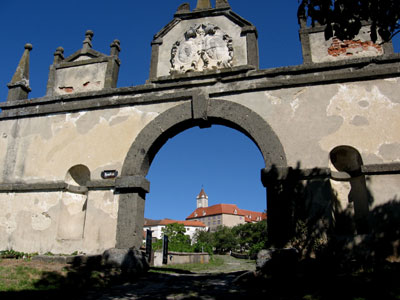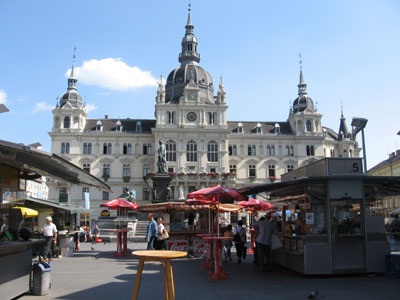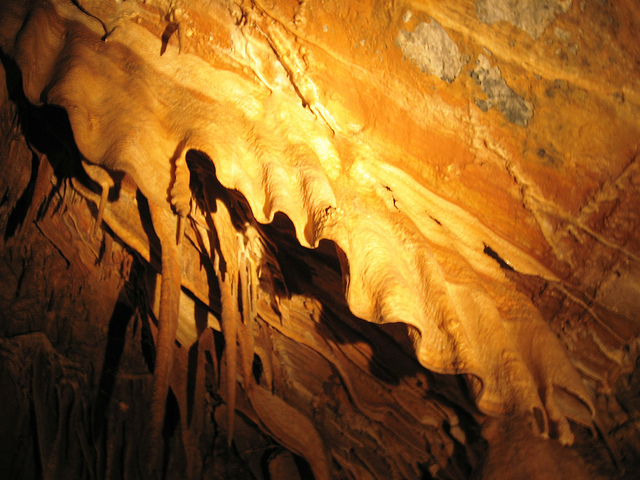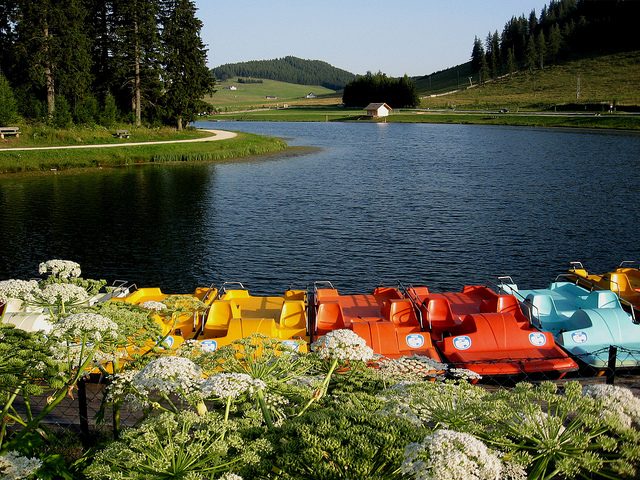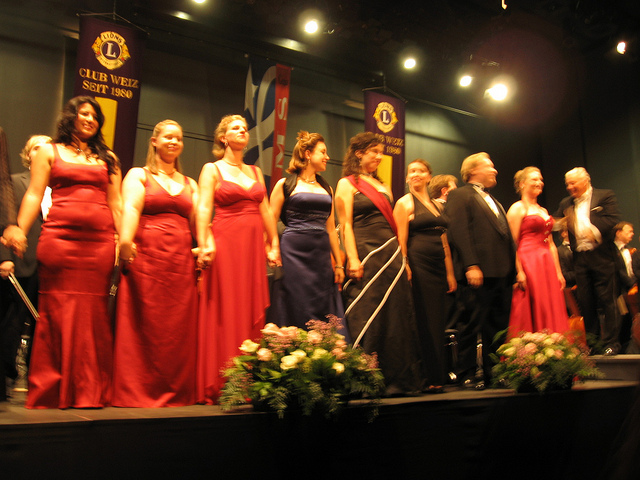Having recovered from my action-packed day yesterday which included a photo safari of my home town, some extreme hiking and subsequent culinary feasting (to counteract any potential weight loss), my final day in Austria had arrived and it was also going to be an exciting one. My brother Ewald and my sister-in-law Anneliese had planned an outing to one of Styria’s true medieval treasures: the Riegersburg, a majestic fortress that was first constructed in the 11th century in the strategically important border region of the Austrian empire.
Styria is one of the lesser known Austrian provinces, most people are more familiar with the area around the capital Vienna; the region surrounding Salzburg (“Sound of Music” country) and Tyrol with its high mountains and the capital of Innsbruck. Styria, although the second largest Austrian province that features the country’s second largest city (its capital, Graz), has largely remained below the radar of most North American tourists.

The first gate to the Riegersburg
As far as I am concerned, it is one of the most beautiful spots, and I don’t just say that because I am originally from there. As a matter of fact, one of the explicit goals of my trip to Austria this year was to view the area I grew up in through the eyes of a travel writer and put it in context with some of the other areas that I have had a chance to visit over the last few years.
Styria is composed of eight major travel regions:
– the Dachstein – Tauern Region, characterized by high mountains, great skiing and other outdoor diversions
– the picturesque lake area of the Salzkammergut – Ausseerland
– the Murtal holiday region, a densely forested area offering lots of outdoor activities
– Upper Styria, another mountainous region that features the “Styrian Water Road” , the “Styrian Iron Road” as well as the Hochschwab mountain region
– Graz, the province’s capital, a UNESCO World Heritage Site and the 2003 European Cultural Capital
– Eastern Styria, my native region, an enchanting region characterized by medium size mountains, Austria’s largest mountain pasture, orchards, fertile farmland, monasteries and castles
– Thermenland Styria, a region full of gently rolling hills, vineyards and ancient volcanic activity that has created six world caliber spa resorts, and
– The South Styrian Wine Region and Western Styria where gently sloping hills full of vineyards and the famous White Horses destined for the Vienna Riding School invite to an area that is often referred to as the “Austrian Tuscany”.

Another gate to the fortress
Today’s destination, the Riegersburg, is located just at the southern border of the Eastern Styria travel region, right adjacent to the volcanic region of the Thermenland area. As a matter of fact, the fortress itself is built on the ancient volcanic cone of a long-extinct volcano. We started our drive from Weiz through the Raab Valley and the rural town of Gleisdorf. There we turned off the major road onto smaller country roads that took us through beautiful rolling hills, many of which feature orchards and vineyards.
Many of these small side roads are official bicycle trails which are conveniently signed and many of the local vintners own little rural restaurants called “Buschenschenken” whose garden terraces invite hikers, bikers and other travelers to sit down and enjoy Styrian culinary delicacies and wine. We encountered hardly any traffic, and on this beautiful warm summer day many cyclists were out there getting a good workout and enjoying the scenery.

The basaltic rock of the Riegersburg
After about 45 minutes we had reached our destination: a basaltic rock crowned with the majestic Riegersburg fortress was right in front of us. We parked the car in the village at the foot of the rock and started our ascent up to the castle. The narrow road lacks pavement and is essentially composed of dark volcanic rock that features many narrow grooves and ruts from hundreds of years of use by horse carriages. We entered through the first gate which was one of many. Altogether the Riegersburg has seven major gates and eleven bastions. The defensive wall around the fortress is an impressive three kilometers long. The combination of these features made the fortress the most important fortification at the Styrian border of the Austro-Hungarian empire.

A view down from the fortress into the village of Riegersburg
The strategic importance of this border region becomes evident in the context of the 16th and 17th century Ottoman Wars between the Habsburg Monarchy and the Ottoman Empire. The area of Eastern Styria in particular was often under threat of invasion by forces from the East. In 1664 a decisive final battle was fought in nearby Mogersdorf which ended the two-year war against the Turks. The Riegersburg itself was never conquered and as a result it came to be referred to as the “strongest fortification of Christianity”. It was part of an entire series of border fortresses along the boundary of the Habsburg Empire.

Borther and sister in front of the WWII plaques
We walked slowly up to the castle on the rutted road that was surrounded by a crenellated wall that would allow sharpshooters to target potential invaders approaching the fortress. On an open plateau below the actual castle building there are numerous plaques mounted on a wall, providing a memorial to hundreds of soldiers from surrounding villages that fell during World War II. Each village had its own plaque. Another picturesque gate took us to the last part of the path that would take us right up to the fortress. At the foot of the fortress is the “Burgtaverne”, a restaurant with a beautiful large outdoor patio that features a gorgeous view of the surrounding countryside and entices with traditional Austrian cuisine.

Another one of the seven gates leading to the heart of the fortress
As we approached the fortress itself we walked across two moats that were each equipped with a drawbridge and the second inner moat actually still had water in it. We were now truly inside the building complex of the fortress and through a large inner courtyard we approached the central building which features the retail store where we purchased our 9.5 Euro admission to the central part of the fortress.

A real drawbridge
